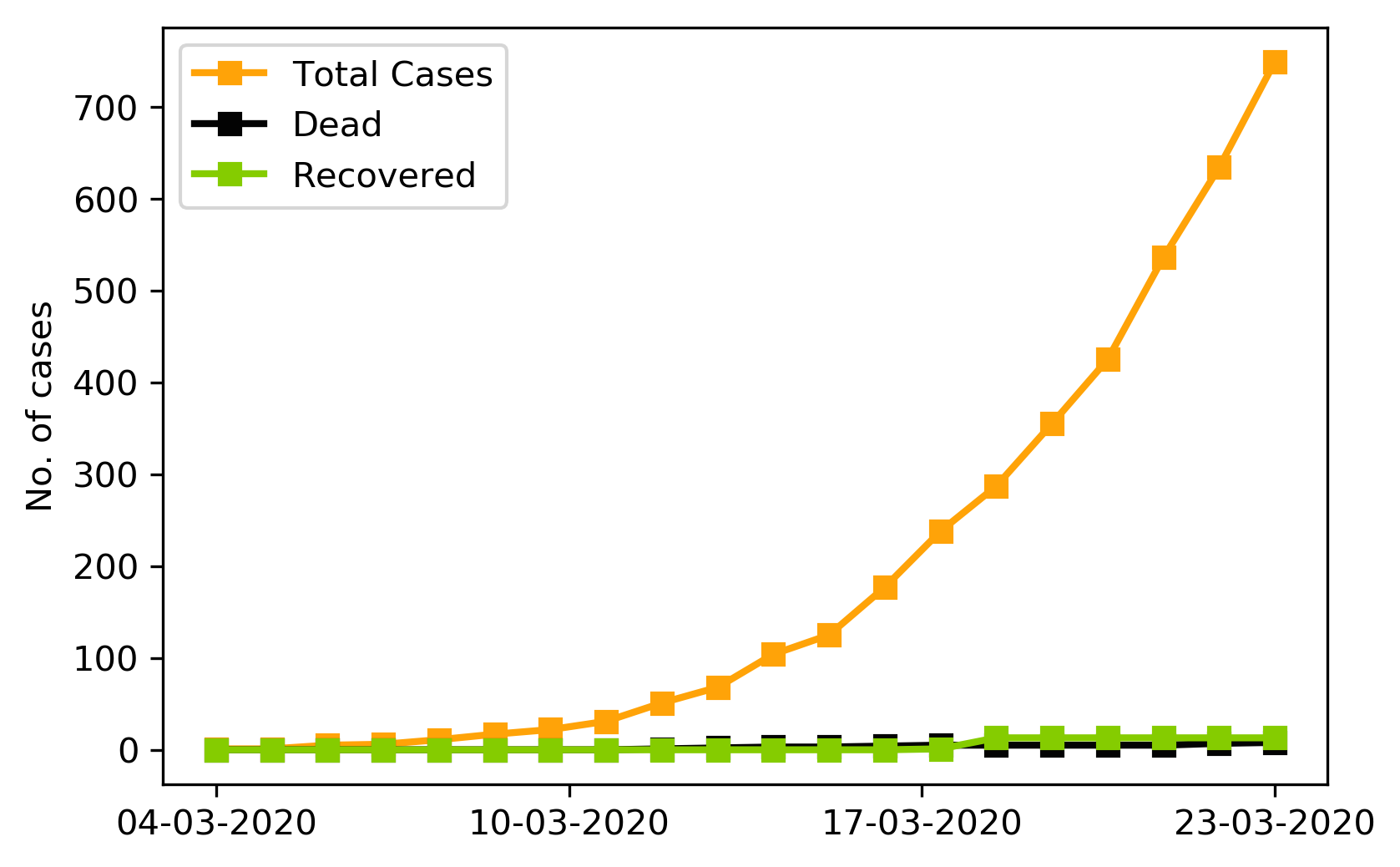How to predict the future of SARS-CoV-2 pandemic in Poland?

In the age of the coronavirus pandemic, we are dealing with uncertainty and with a very vague vision of what will happen in the near future. Due to the fast spread of the virus and high mortality among older people, the government in Poland quite quickly decided to implement restrictive lockdowns, closing schools, kindergartens and universities, cultural places, pubs, and restaurants, as well as banning events and gatherings of over 50 people. At the same time, it was recommending social distancing and self-isolation, limiting contact with other people, and if possible switching to remote work and staying at home.
In addition, it has also implemented stricter measures as of March 24th, which state that people can only leave the home in cases of work or necessary shopping. Public transportation can only be filled to half the seating capacity. Lastly, people cannot walk the streets in groups larger than two people, unless they are family. Unfortunately, the current situation will have serious economic and social consequences, and therefore everyone realizes that it cannot be maintained for too long. Therefore, most of us have the following questions:
- How long should we keep the lockdown?
- How many people will be infected?
- How long the pandemic will go?
- How many people will die?
- What if we release the lockdown after Easter?
- What if we do more testing for COVID-19?
In this article, we show you how to perform COVID-19 pandemic analysis using mathematical modeling and machine learning, and answer the above questions in an approximate way. The models were fitted to the data for Poland from March 5 – March 23 containing the number of total cases, deaths, and recoveries [1] (see Figure 1). In the beginning it should be noted that each mathematical model is limited by the set of assumptions that must be made before fitting it to the data. In addition, we currently do not have a large amount of data on the course of the pandemic in Poland. Therefore, the results of the analysis presented in the article are more illustrative and the numbers should be treated with some caution.

Figure 1. The number of COVID-19 cases reported in Poland [1].
We based our analysis on the SEIR epidemiological model, which is commonly used to analyze the spread of coronavirus [2][3]. However, this model has three limitations.
- First of all, it does not directly model the course of the number of cases, deaths, and recoveries that are available in the data.
- Secondly, it assumes that all patients are recognized and isolated, and does not include people who have no symptoms or have not been tested for the virus.
- Thirdly, it does not model uncertainty, which would show how strongly reality can depart from what the model shows us.
Our contribution is then fourfold.
- First, we have extended the SEIR model with additional elements that allow us to forecast the values available in the data.
- Secondly, we extended the model to include asymptomatic or untested patients.
- Thirdly, we used the Bayesian approach to model uncertainty.
- Fourthly, we fitted our model to the data for Poland and showed how to perform some basic analysis.
The article was divided into 3 parts:
- Results & Discussion. The section contains the results of experiments along with a comment and answers to the questions posed in the introduction. If you are not interested in technical details, you can jump to Conclusions immediately after this section.
- Model Details. The section contains a detailed description of the model used, code fragments and mathematical equations that will allow you to repeat the analysis contained in the article yourself.
- Limitations. The section contains a list of selected limitations and imperfections of the model, which can be a good starting point for independent improvement and experimenting with data.
If you want to read more check this article below.
Article: https://alphamoon.ai/blog/2020/03/24/how-to-predict-the-future-of-sars-cov-2-pandemic/
